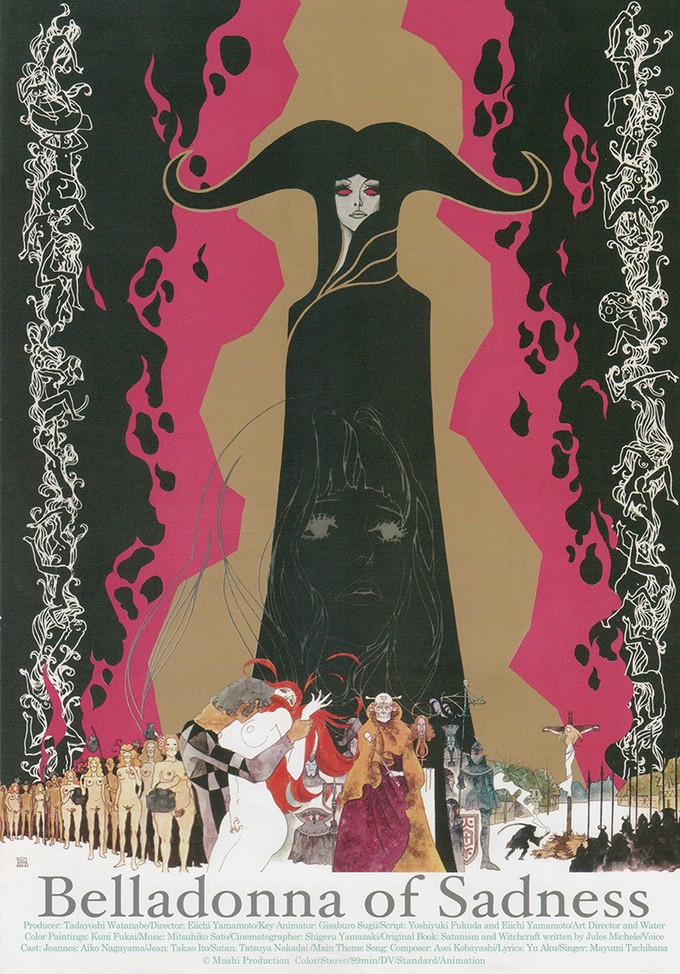
Hola all. Massawyrm here.
There are only so many words in the English language and only so many times you can use each one before they begin to grow stale, losing any and all real meaning. Take the word “original,” for example. How many times can you use that to describe a film before they all seem to be “original?” After a while, you have to throw an adjective on there somewhere to maintain a baseline meaning. Sure, those other films were “Original,” but this one is “Thoroughly original!” Or “wildly original!” Or “Brimming with originality!” And once you’ve spun out all of your good adjectives, invariably, as a critic, you begin to dabble in the word “unique.” Like any user who has built up a tolerance, you slip slowly toward the harder stuff, needing a bigger and better fix to describe film. But once you’ve anointed a handful of films “unique”, the pattern begins anew. Trouble is, “unique” has a very specific meaning. It means one of a kind. As in, there is only one. So calling something “truly unique,” is a bit of a jerk off.
But we do it, despite the fact we know we shouldn’t.
BELLADONNA OF SADNESS is exactly the sort of film the word unique should be conjured for. You have never seen its like before; you are unlikely to ever see its like again. A 19th century French fairy tale loosely adapted from the book La Sorcière, adapted to animation by early 70’s Japanese perverts, produced by a company out of money and thus literally going-for-broke, BELLADONNA is a dozen different kinds of weird rolled into one, making for one of the greatest underground altered-states movies ever made.
The animation is all over the map. Out of funds and unable to entirely animate the feature, the director instead put the money towards animating carefully chosen sequences, leaving the rest of the film to be animated via “scrolls,” - large, sprawling watercolor paintings that the camera slowly pans over as the film’s dialog or score highlights what is otherwise going on. Some sections are conversations simply cutting back and forth between paintings, others track lavishly across long, unbroken, majestic pieces of art that feels more akin to drinking in museum pieces than it does watching sexually charged 70’s era anime. But just when you think you’re watching paintings, one of the film’s money sequences kicks in, dropping your brain squarely in another universe altogether. Each animated sequence is radically different from its brethren, evoking styles, moods, and techniques that you’ll find nowhere else in the film, one orgy sequence made up almost entirely of chalk-outline style drawings, while another can only be described as “School House Rock on acid.”
And as wild as the art is, it is only outpaced by the audacity and bleakness of its narrative. Several people described this to me as “dark,” only to leave out the fact that it lacks any light at all whatsoever. The story is about Jeanne, a beautiful young maiden who loves her young husband and just wants to live the quiet life of a farmer’s wife. But the Devil won’t have it. Through the evils of the local monarchy, he trainfucks Jeanne again and again, driving her ever deeper into despair, until she has no other choice but to turn to him for revenge on the world that has been so cruel. By the time we get to the third act, we want nothing more than to see Jeanne give in to the Devil just so she can make the people who have wronged her pay – even if the devil is behind it all to begin with. And just to up the ante, the entire film is an allegory for the way women were treated pre-French Revolution, insinuating that these types of treatment, and the many Jeanne’s of the world, were the fuel for the fire of the Revolution itself.
So yeah, it’s a bit heavy.
The film is hypnotic, at times stunningly beautiful, dipping into the absurd, the outrageous, or sometimes the downright vicious. Unlike what one might imagine from the trailer, the long sweeping passes over the scrolls never leaves you bored or restless, but rather creates a meditative pacing all its own. Jeanne begins as an empty vessel, a thing of beauty – nothing more than a despoiled painting, but slowly, through the events of the film, becomes a painfully tragic heroine brimming with complex emotions while facing off against the films only other fully developed character – The Devil. By the end, BELLADONNA proves to be one of the greatest Devil stories ever told. It’s not a common tale of seduction or perversion of one’s soul through greed, but rather about how the Devil breaks down a pure soul solely relying upon the cruelty, greed and perversion of others.
It’s a beautiful tragedy; dark, twisted, and drenched in melancholy.
Needless to say, I loved the living shit out of it. The darkness of the story tempered by the beauty and elegance of much of the art creates a wonderful juxtaposition, while the moments of zany outlandishness keeps you off balance and proffers the right amount of levity to keep you from sinking into a despair of your own. All set to a psychedelic Japanese soundtrack that could have only come straight out of the early 70’s. It is a truly one-of-a-kind film, every aspect of it unique.
The new 4k transfer we saw was glorious. Bright and vivid, the colors pop; the depth of the brushstrokes and water stains on the art showing through in every frame. Releasing soon on Bluray, this is a must watch for animation fans, fans of dark fables or devil tales, or anyone interested in 60’s/70’s psychedelic counterculture. Being a fan of all three, this film was bowled right up the middle of what I love and proved to be one of my very favorite films at this year’s Fantastic Fest. Seek it out once it hits the market.
Until next time, smoke ‘em if ya got ‘em.
Massawyrm

